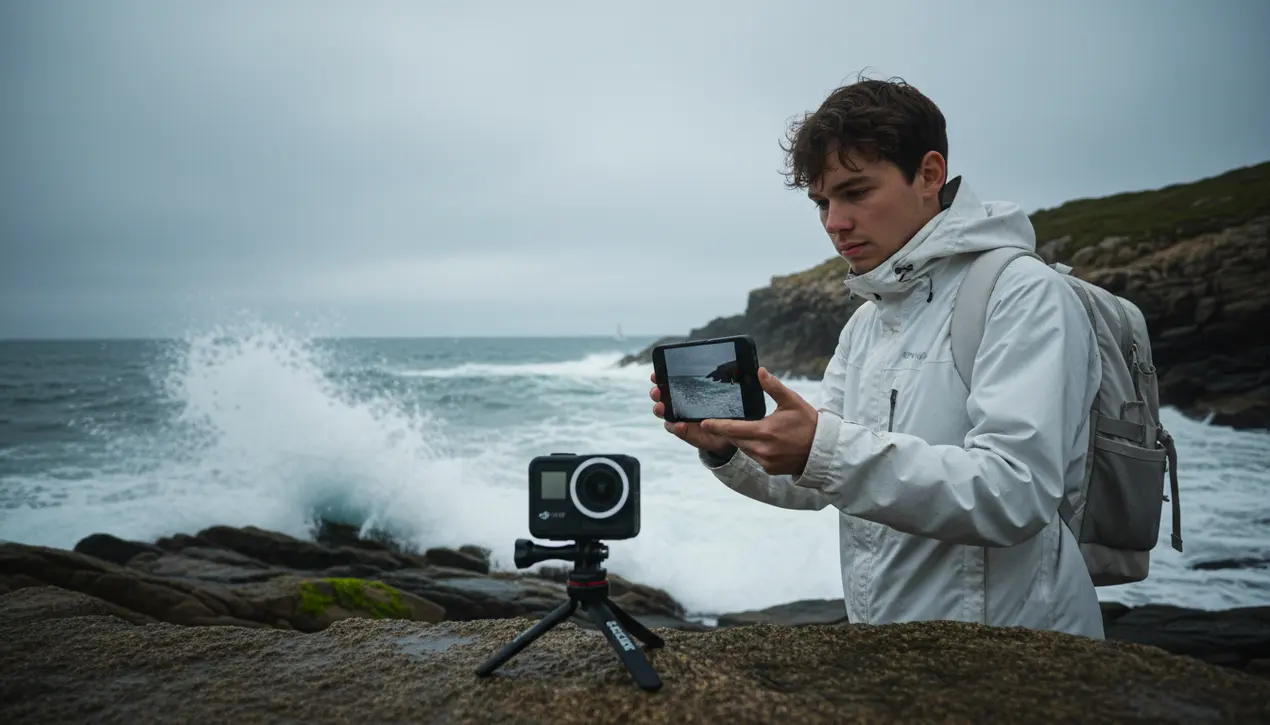
Otherauto & mobilityElectric Vehicles
DJI's Osmo Action 6 is the first action cam with a variable aperture.
AN
Andrew Blake
2 hours ago7 min read
DJI has just dropped its third action camera in under four months, the Osmo Action 6, and it feels like they're not just iterating but genuinely trying to redefine what a rugged camera can do. The headline feature, something unprecedented in this category, is a variable aperture, a technical leap that offers creators far more control over their exposure than the fixed f/2.8 lenses common on rivals like GoPro. This isn't just a spec sheet bullet point; it's a functional game-changer.On a dim, overcast day, you can open it up to f/2. 0, letting in twice as much light as its predecessor.This means you can use a faster shutter speed, which in turn dramatically cuts down on the motion blur that often plagues low-light action footage and, crucially, improves the performance of the electronic image stabilization. Conversely, on a blindingly bright beach or ski slope, you can stop it down to f/4.0. This allows you to slow the shutter speed, making fast-moving water or snow appear more fluid and natural, rather than the harsh, staccato look you sometimes get.It even introduces the potential for a shallower depth of field, helping to separate a subject from a busy background—a touch of cinematic flair previously reserved for bulkier cameras. The catch, and it's a curious one, is that DJI doesn't grant full manual control over the aperture.You're limited to a fixed f/2. 8 or an Auto mode that operates within a range, which feels like a missed opportunity for creators who'd love to lock it at f/2.0 for portrait-style shots. Alongside this aperture innovation is a new, square 1/1.1-inch sensor. While it doesn't boost the megapixel count as some rumors suggested, its square shape is a clever nod to the realities of modern content consumption.It allows you to record in a native 3,840 x 3,840 resolution, meaning you can crop to a perfect 4K horizontal or vertical clip for Instagram Reels or TikTok without sacrificing an ounce of resolution. This is a pragmatic design choice that acknowledges creators are often shooting for social media first.The sensor itself is physically larger than the one in the Osmo Action 5 and significantly bigger than the sensor in the current GoPro Hero 13, which theoretically translates to better performance in challenging light and a wider dynamic range—DJI claims 13. 5 stops.Paired with 10-bit color and D-LogM, this suggests footage will be incredibly flexible in post-production, holding detail in both shadows and highlights on a high-contrast day. DJI is also borrowing a page from Fujifilm's very successful playbook by introducing Film Tone profiles, offering six distinct looks straight out of the camera, from 'cool tones' to 'classic negative film.' It’s a feature that saves time for creators who want a specific aesthetic without diving into editing software. Other quality-of-life improvements are everywhere: internal storage gets a slight bump to 50GB, the new dual-latch Quick-Release mount is a simple but brilliant upgrade for faster accessory swaps, and gesture controls join voice commands for hands-free operation.Having used the camera for a few days, the low-light video is noticeably cleaner and more color-accurate than the Action 5, and the improved stabilization in SuperNight Mode is immediately apparent. It’s a compelling package, though its US availability continues DJI's recent pattern of relying on third-party retailers like Amazon and B&H Photo rather than its own store, a lingering consequence of geopolitical tensions. Priced at €379 in Europe, the Osmo Action 6 isn't just another incremental update; it's a thoughtful, feature-packed challenger that directly addresses the evolving needs of today's content creators, pushing the entire action cam category forward in the process.
#DJI
#Osmo Action 6
#action camera
#variable aperture
#square sensor
#featured
Stay Informed. Act Smarter.
Get weekly highlights, major headlines, and expert insights — then put your knowledge to work in our live prediction markets.
Comments
Loading comments...
© 2025 Outpoll Service LTD. All rights reserved.